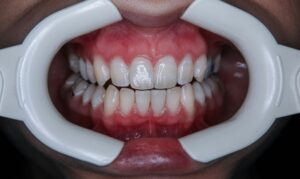Painful intercourse, medically known as dyspareunia, can be a distressing and complex issue that affects people of all genders. It is a symptom rather than a condition in itself and can result from a wide variety of physical, psychological, or emotional factors. Left untreated, it can lead to a decline in both physical intimacy and emotional well-being, causing strain in relationships and impacting overall quality of life. However, understanding the most common causes of painful intercourse and the appropriate treatments can help individuals address the issue and restore healthy, pleasurable sexual experiences.
In this detailed guide, we will explore 15 common causes of painful intercourse and offer insights into effective treatments for each.
1. Vaginal Dryness
Vaginal dryness is one of the most prevalent causes of discomfort or pain during intercourse, particularly in women. This condition often results from a decrease in estrogen levels, which may occur due to menopause, breastfeeding, or the use of certain medications, such as antihistamines, birth control pills, or antidepressants. Without adequate lubrication, vaginal tissues can become irritated or even develop microtears during intercourse, resulting in pain.
Treatment:
- Lubrication: Use water-based or silicone-based lubricants to reduce friction during intercourse.
- Topical estrogen therapy: For postmenopausal women, vaginal estrogen creams, rings, or tablets can help restore moisture to the vaginal tissues.
- Regular hydration and avoiding products that cause dryness (like antihistamines) may also alleviate symptoms.
- Vaginal moisturizers: These are non-hormonal treatments that can provide longer-lasting moisture.
2. Vaginismus
Vaginismus is a condition in which the muscles surrounding the vaginal opening involuntarily contract or spasm during attempts at penetration, resulting in pain. This condition can have both psychological roots (such as fear or anxiety around sex) and physical factors (such as past trauma, lack of sexual education, or previous painful experiences). Vaginismus can make intercourse extremely difficult, painful, or even impossible.
Treatment:
- Pelvic floor physical therapy: A trained therapist can guide individuals through exercises designed to relax and control the pelvic floor muscles.
- Vaginal dilators: These gradually increase in size and can help desensitize the vaginal muscles over time.
- Cognitive-behavioral therapy (CBT): Working with a therapist to address the underlying psychological factors, such as anxiety, past trauma, or fear, can significantly improve symptoms.
- Sensate focus exercises: These involve non-penetrative touch, designed to reduce fear and anxiety associated with sex.
3. Endometriosis
Endometriosis is a chronic condition in which tissue similar to the lining of the uterus grows outside of the uterus, often on the ovaries, fallopian tubes, and other pelvic organs. This displaced tissue responds to the menstrual cycle in the same way as the uterine lining, causing bleeding, inflammation, and scar tissue formation. Endometriosis often results in painful intercourse, particularly with deep penetration, due to inflammation and the formation of adhesions in the pelvic region.
Treatment:
- Pain management: NSAIDs (like ibuprofen) can help relieve inflammation and pain.
- Hormonal therapy: Birth control pills, hormone therapy, or GnRH (gonadotropin-releasing hormone) agonists can reduce or stop the growth of endometrial tissue.
- Surgical intervention: In severe cases, laparoscopic surgery may be recommended to remove the excess tissue and adhesions.
- Lifestyle modifications: Regular exercise and anti-inflammatory diets can help reduce symptoms.
4. Pelvic Inflammatory Disease (PID)
Pelvic Inflammatory Disease is an infection of the female reproductive organs, often caused by sexually transmitted infections (STIs) such as chlamydia or gonorrhea. If left untreated, PID can cause scarring and adhesions in the fallopian tubes and other reproductive organs, leading to chronic pelvic pain, painful intercourse, and even infertility.
Treatment:
- Antibiotics: A course of antibiotics is required to treat the infection and prevent further damage.
- Early diagnosis and treatment: Catching and treating STIs early can prevent the development of PID.
- Regular STI screenings: Especially for those at higher risk, can help prevent the onset of PID.
5. Sexually Transmitted Infections (STIs)
Sexually transmitted infections, such as herpes, chlamydia, and gonorrhea, can cause a variety of painful symptoms that affect sexual activity. Herpes can lead to painful sores in the genital area, while bacterial STIs such as chlamydia and gonorrhea can cause infections that result in pelvic pain, discharge, and discomfort during intercourse.
Treatment:
- Antiviral medications: For herpes, antiviral medications (like acyclovir or valacyclovir) can manage outbreaks and reduce symptoms.
- Antibiotics: Bacterial STIs like chlamydia and gonorrhea are treated with antibiotics.
- Prevention: Using condoms or dental dams during intercourse can reduce the risk of contracting or spreading STIs.
- Routine screenings: Regular STI testing helps in early detection and treatment, minimizing long-term damage.
6. Vulvodynia
Vulvodynia is chronic pain or discomfort around the vulva without an identifiable cause. The pain can range from mild to severe and is often described as burning, stinging, or throbbing. Vulvodynia may occur spontaneously or be triggered by pressure from activities such as intercourse, cycling, or prolonged sitting. This condition can significantly impact sexual activity and quality of life.
Treatment:
- Topical treatments: Lidocaine ointments or creams can provide temporary relief before sexual activity.
- Pelvic floor therapy: This can help reduce muscle tension that may contribute to vulvodynia pain.
- Oral medications: Antidepressants or anticonvulsants, such as gabapentin, may be prescribed to help manage nerve pain.
- Dietary changes: Avoiding irritants like caffeine, spicy foods, and alcohol may help reduce flare-ups.
7. Interstitial Cystitis (Bladder Pain Syndrome)
Interstitial cystitis (IC) is a chronic condition that causes bladder pressure, pelvic pain, and discomfort during intercourse. People with IC often experience painful symptoms with deep penetration, as the bladder becomes inflamed and sensitive. The condition can also cause frequent urination, urgency, and pain during non-sexual activities.
Treatment:
- Bladder instillations: These treatments deliver medication directly into the bladder to reduce inflammation and pain.
- Oral medications: Pentosan polysulfate sodium is often prescribed to protect the bladder lining.
- Physical therapy: Pelvic floor physical therapy can help manage pelvic muscle tension that exacerbates IC symptoms.
- Dietary modifications: Certain foods and drinks, like caffeine, alcohol, and spicy foods, can trigger IC flare-ups, so avoiding them may reduce symptoms.
8. Fibroids
Uterine fibroids are benign (non-cancerous) growths that develop in the uterus. Depending on their size and location, they can cause painful intercourse, particularly during deep penetration. Fibroids can also contribute to heavy periods, pelvic pressure, and lower back pain.
Treatment:
- Hormonal treatments: Birth control pills or GnRH agonists can help reduce fibroid size and symptoms.
- Non-invasive procedures: Uterine fibroid embolization is a procedure that cuts off blood flow to the fibroids, shrinking them over time.
- Surgery: In more severe cases, fibroids can be surgically removed via myomectomy or, in rare cases, a hysterectomy.
9. Irritation from Personal Care Products
Some personal care products, such as scented soaps, lotions, douches, or lubricants, may contain irritants that can cause inflammation and discomfort in the genital area. These products may lead to allergic reactions, resulting in itching, burning, or pain during intercourse.
Treatment:
- Switch to hypoallergenic products: Use fragrance-free, chemical-free, and gentle personal care products.
- Avoid douching: Douching can disrupt the natural balance of bacteria in the vagina, leading to infections and irritation.
- Use natural lubricants: Consider using natural, plant-based lubricants that are free from synthetic chemicals or irritants.
10. Ovarian Cysts
Ovarian cysts are fluid-filled sacs that develop on the ovaries. While many cysts are harmless, larger cysts can cause pain, particularly during intercourse. The pain may be localized to one side of the pelvis or radiate throughout the lower abdomen, depending on the size and location of the cyst.
Treatment:
- Watchful waiting: Many ovarian cysts resolve on their own and may only require monitoring.
- Pain management: NSAIDs or other pain relievers can help manage symptoms.
- Surgical removal: In cases where cysts are large, persistent, or causing severe symptoms, surgery may be necessary to remove them.
11. Hormonal Changes (Menopause)
Menopause leads to a significant drop in estrogen levels, which can cause the vaginal tissues to thin and lose elasticity, a condition known as vaginal atrophy. This can result in painful intercourse due to dryness, irritation, and decreased vaginal lubrication. Hormonal changes during menopause may also lead to a loss of libido and increased sensitivity to pain.
Treatment:
- Topical estrogen therapy: Vaginal estrogen creams, rings, or tablets can help replenish moisture and improve elasticity in the vaginal tissues.
- Hormone Replacement Therapy (HRT): Systemic hormone therapy may be an option for women who are experiencing multiple menopausal symptoms.
- Lubricants and moisturizers: Using water-based or silicone-based lubricants during intercourse can alleviate friction, while regular use of vaginal moisturizers can help maintain hydration.
12. Psoriasis or Eczema
People with psoriasis or eczema can experience flare-ups of these skin conditions around the genital area, leading to inflammation, itching, and pain during intercourse. These conditions make the sensitive skin in the genital region prone to irritation from friction during sex or from the use of certain personal care products.
Treatment:
- Topical corticosteroids: Prescription-strength creams can reduce inflammation and soothe irritated skin.
- Moisturizing creams: Regular use of hypoallergenic moisturizers can help maintain skin hydration and prevent flare-ups.
- Avoiding irritants: Choose gentle, fragrance-free personal care products to minimize irritation.
13. Allergic Reactions (Latex or Lubricants)
Allergies to latex condoms, personal lubricants, or other sexual products can cause discomfort, itching, and pain during intercourse. These allergic reactions can range from mild irritation to severe pain, swelling, or inflammation in the genital area.
Treatment:
- Latex-free condoms: Opt for non-latex alternatives such as polyurethane, polyisoprene, or natural lambskin condoms.
- Hypoallergenic lubricants: Use water-based or silicone-based lubricants free from fragrances, dyes, or parabens that can cause irritation.
- Consult an allergist: If symptoms persist, an allergist can help identify the specific allergen and recommend alternatives.
14. Pelvic Floor Dysfunction
Pelvic floor dysfunction occurs when the muscles that support the pelvic organs (such as the bladder, uterus, and rectum) become too tight, weak, or fail to function correctly. Tight pelvic muscles can lead to pain during intercourse, urination, or bowel movements, while weakened muscles can cause issues like incontinence.
Treatment:
- Pelvic floor physical therapy: A trained therapist can teach exercises to strengthen or relax pelvic muscles, improving muscle coordination and alleviating pain.
- Biofeedback: This technique helps individuals learn how to control and relax their pelvic floor muscles more effectively.
- Yoga and breathing exercises: Gentle stretching, yoga, and breathing exercises can reduce tension and promote relaxation of the pelvic muscles.
15. Emotional or Psychological Factors
Painful intercourse can sometimes stem from emotional or psychological factors, such as anxiety, depression, past sexual trauma, or unresolved relationship issues. Psychological distress can lead to physical symptoms such as muscle tension or lack of arousal, contributing to painful intercourse. These factors are particularly relevant in conditions like vaginismus, where emotional triggers can cause involuntary muscle spasms.
Treatment:
- Sex therapy: Working with a therapist who specializes in sexual health can help address underlying psychological factors contributing to painful intercourse.
- Cognitive-behavioral therapy (CBT): CBT is effective for addressing anxiety, fear, or negative thoughts related to sexual activity.
- Relaxation techniques: Mindfulness, deep breathing, and stress reduction techniques can help reduce anxiety and muscle tension during sexual activity.
Conclusion
Painful intercourse, or dyspareunia, is a multifaceted issue with numerous potential causes, ranging from physical conditions such as vaginal dryness or endometriosis to psychological factors like anxiety or past trauma. Identifying the root cause of discomfort is essential for finding an effective treatment. Whether it’s through medical intervention, physical therapy, or psychological support, there are numerous ways to alleviate pain during sex and restore a healthy and fulfilling intimate life. If you experience persistent pain during intercourse, consulting with a healthcare professional or sexual health specialist can help guide you toward appropriate solutions that improve both your sexual and emotional well-being.




